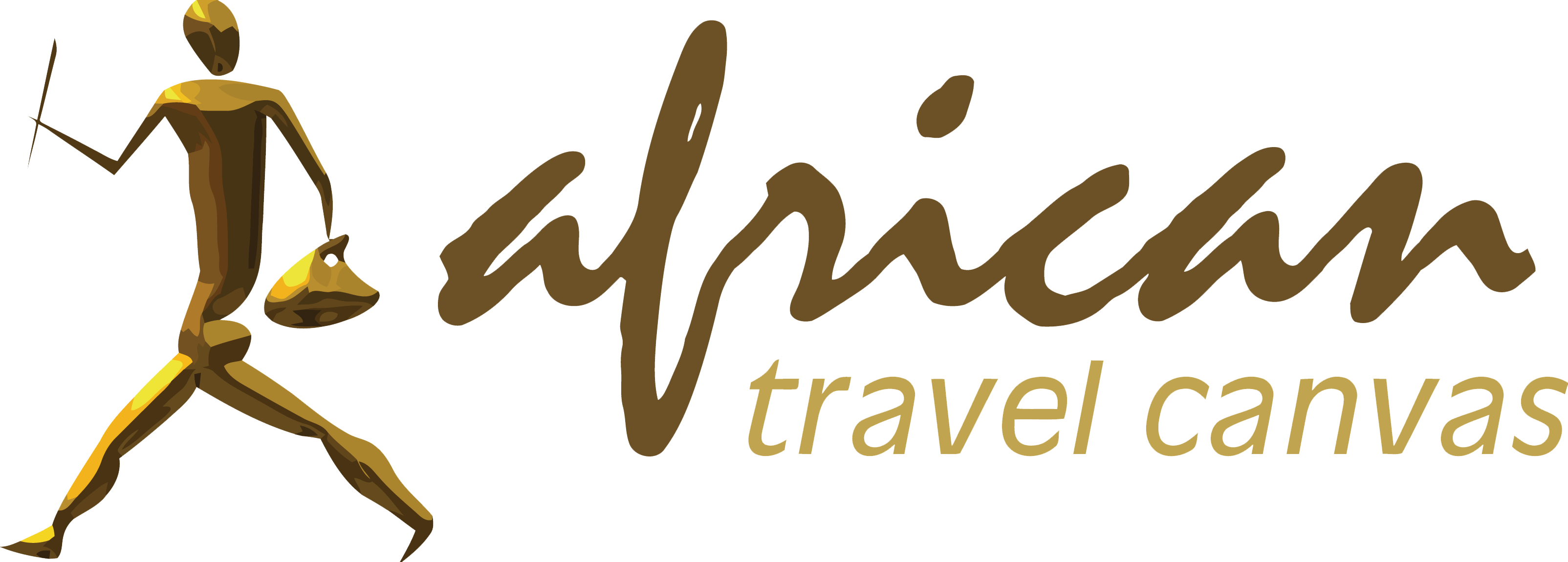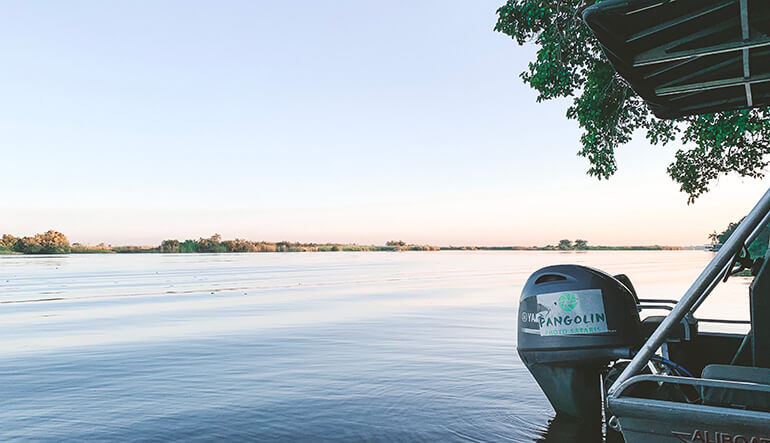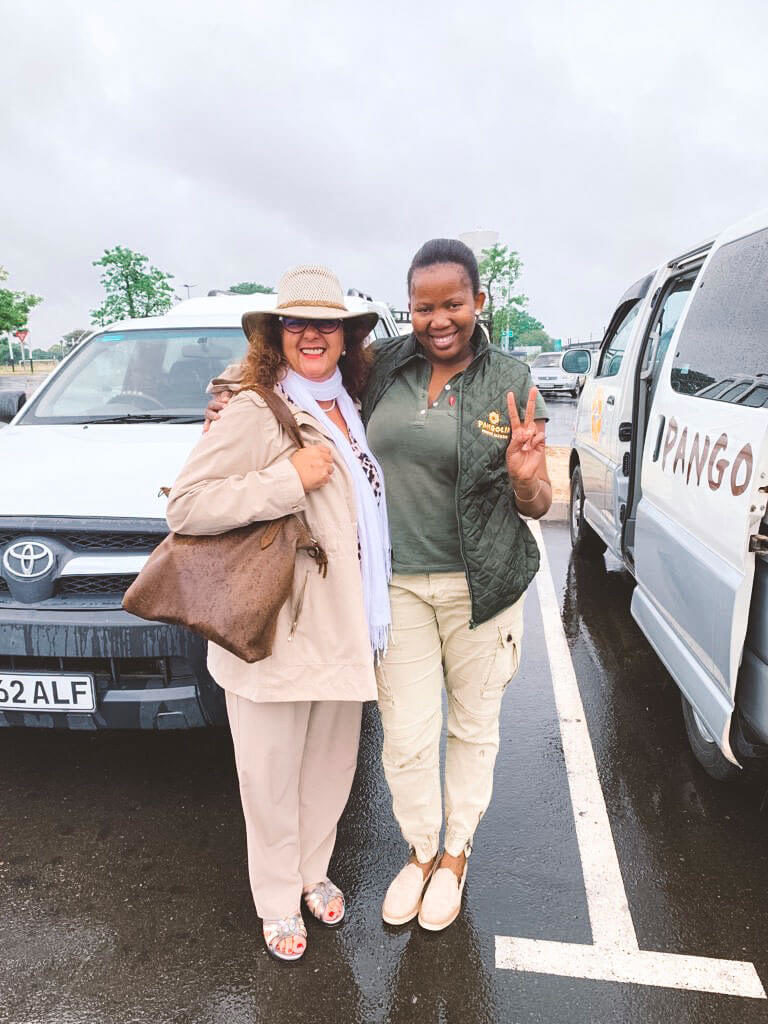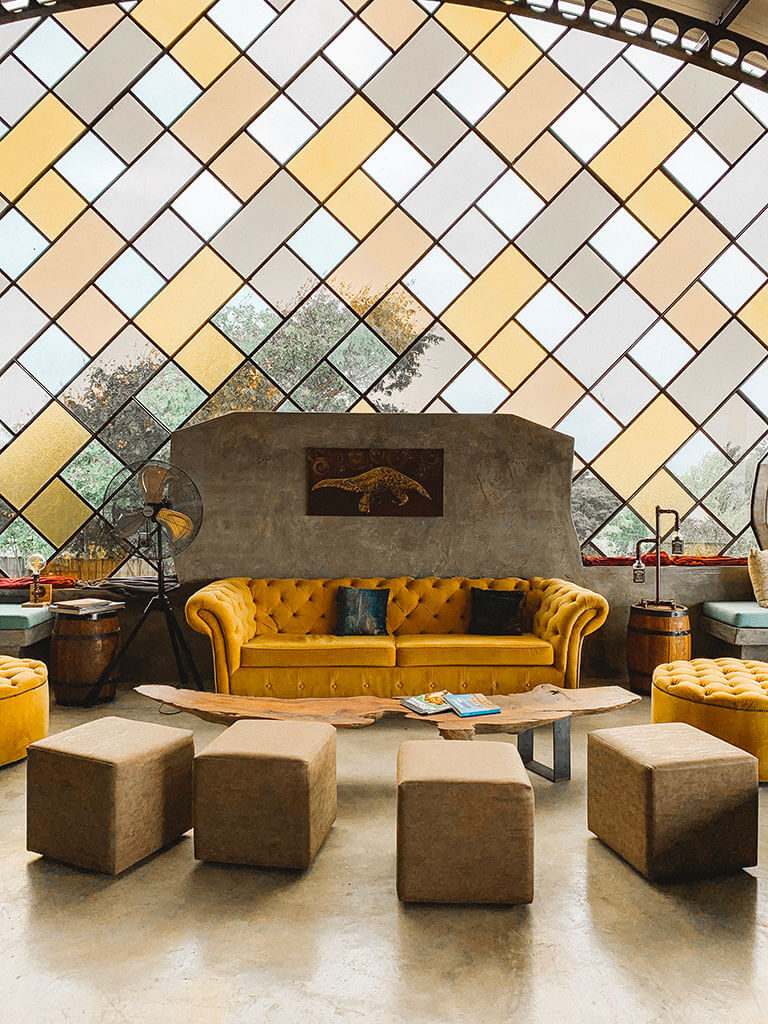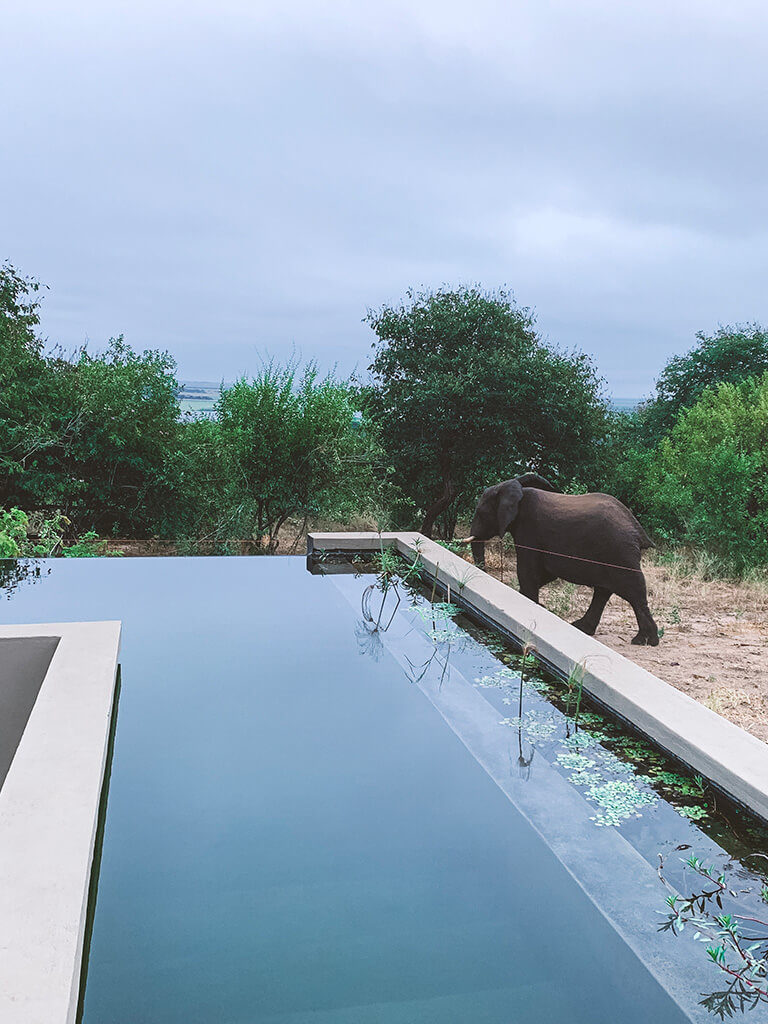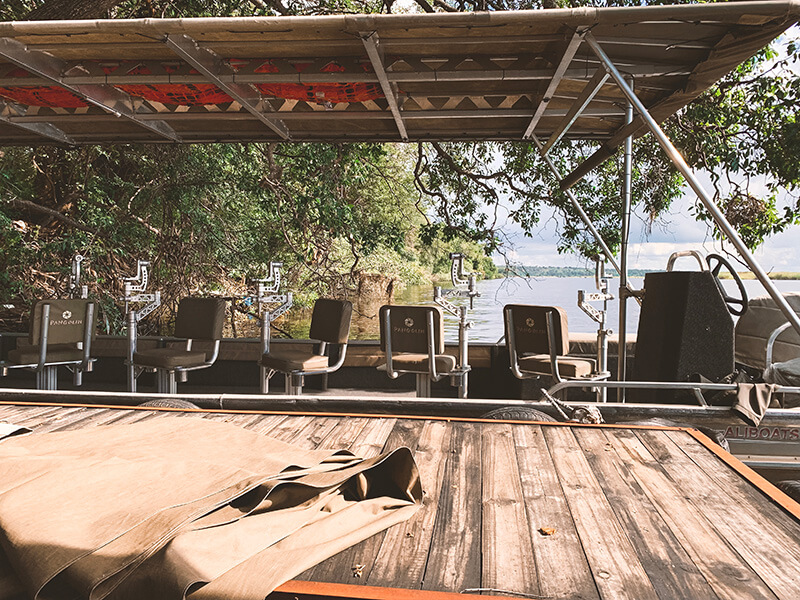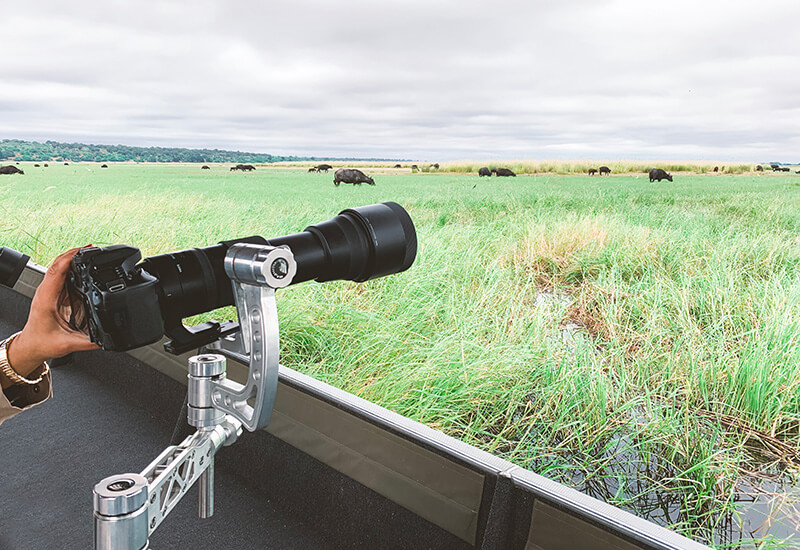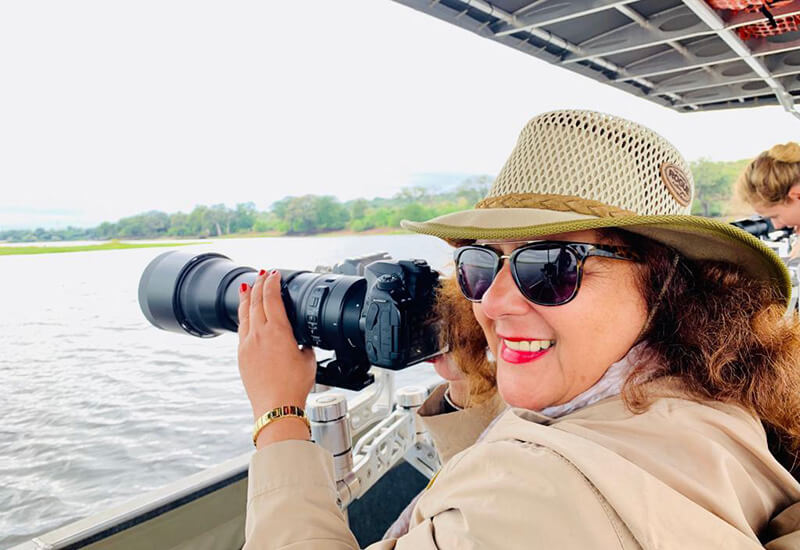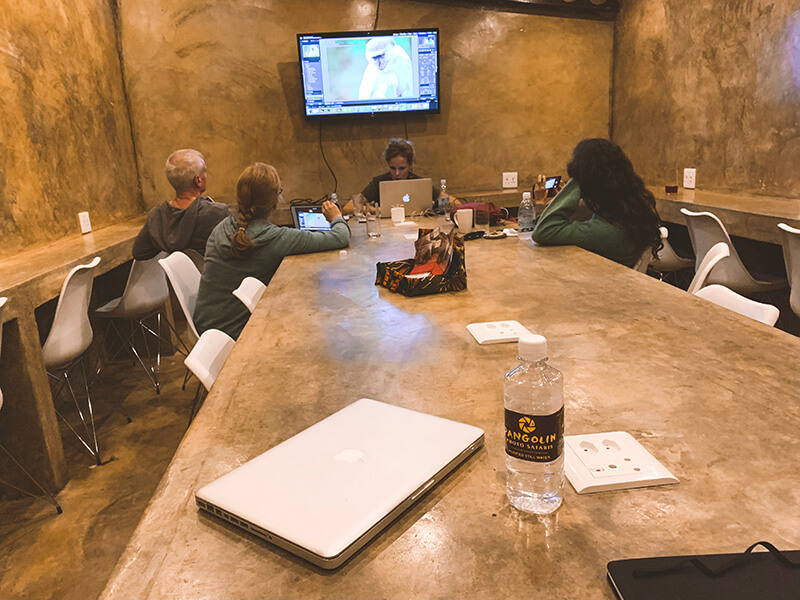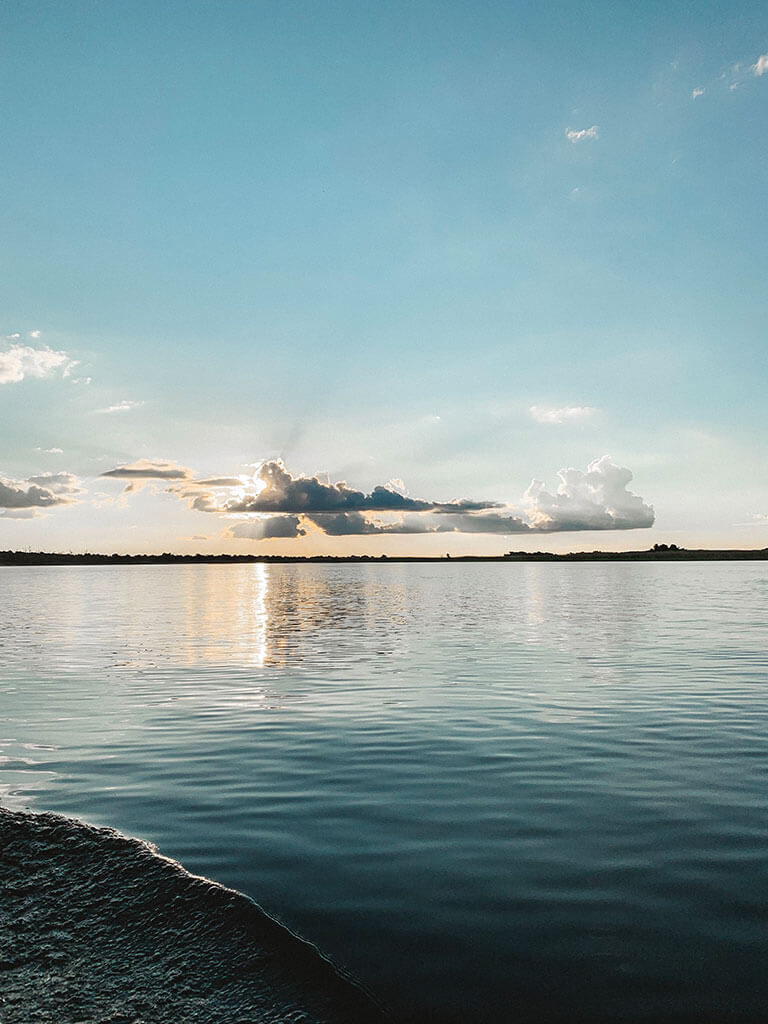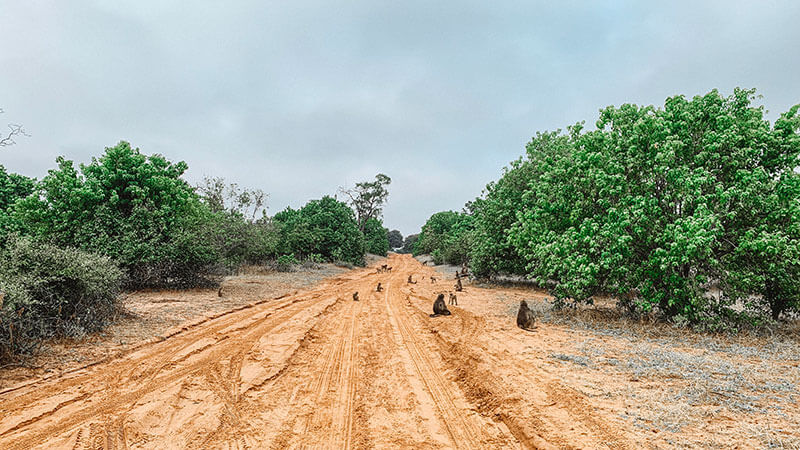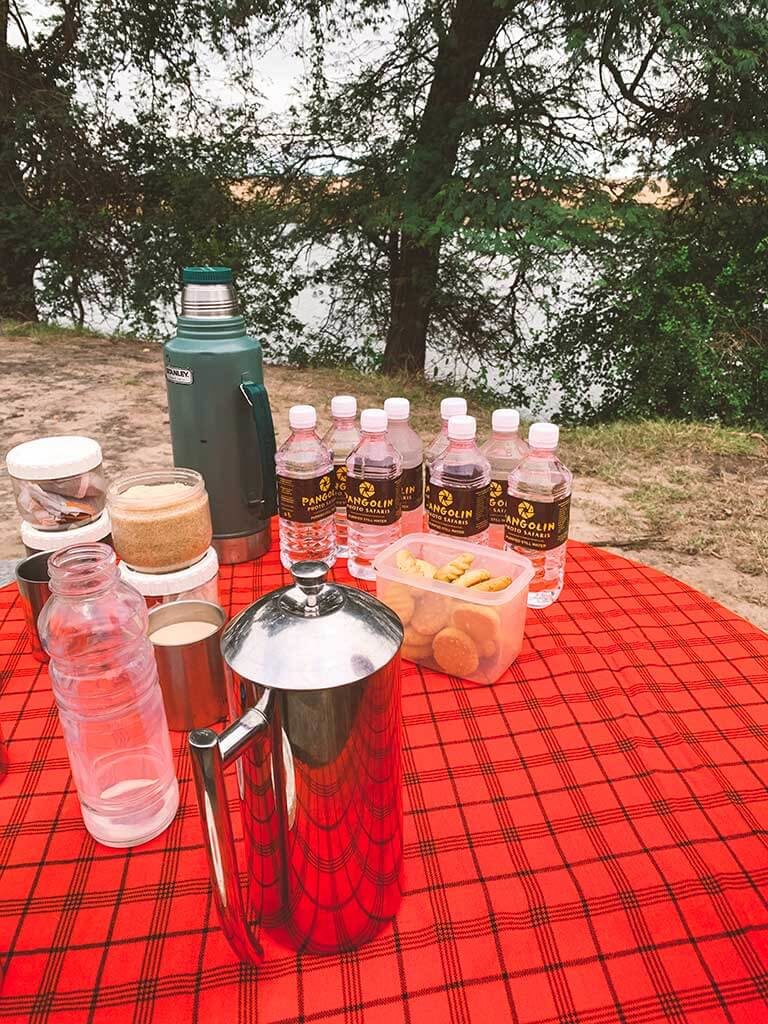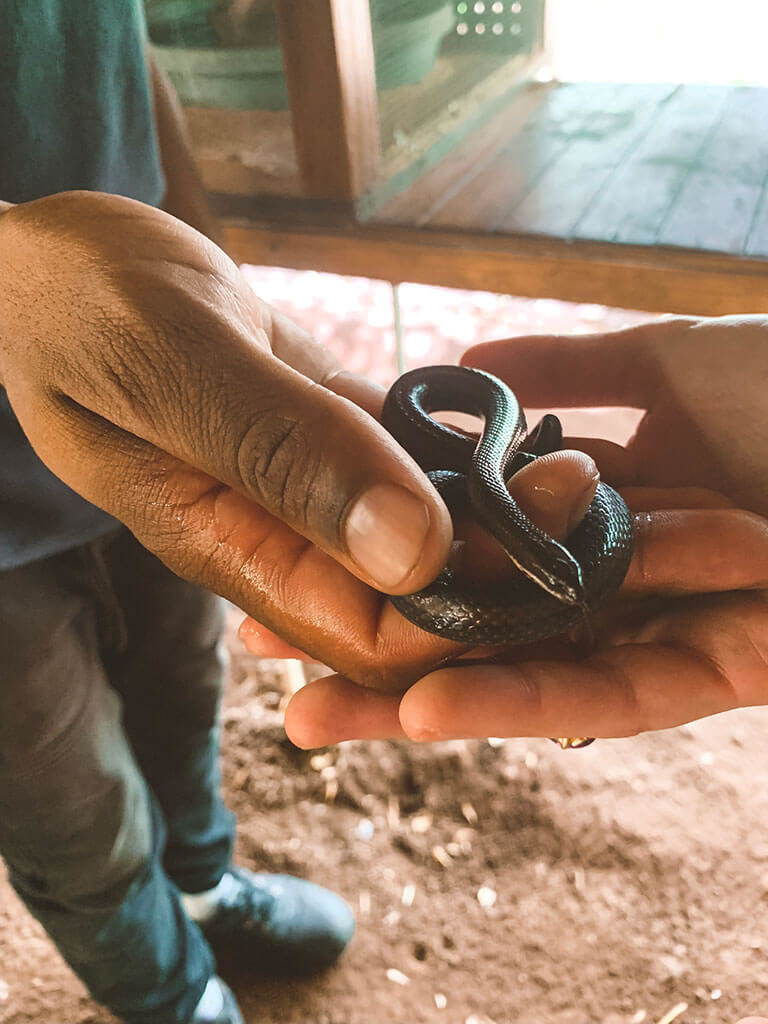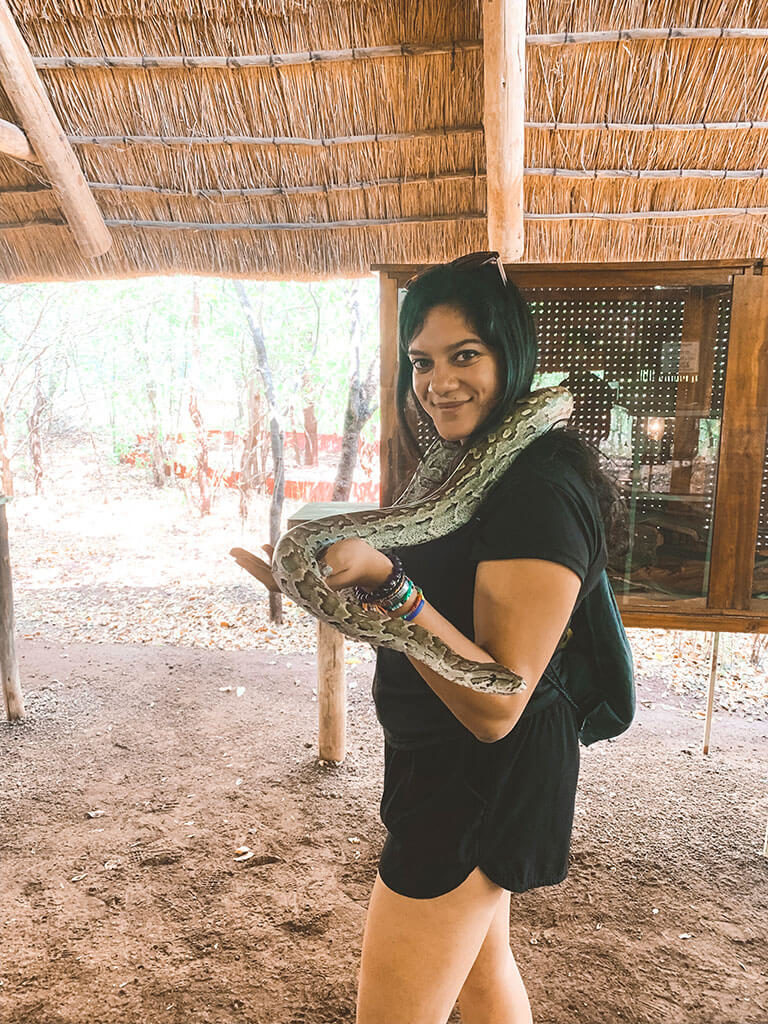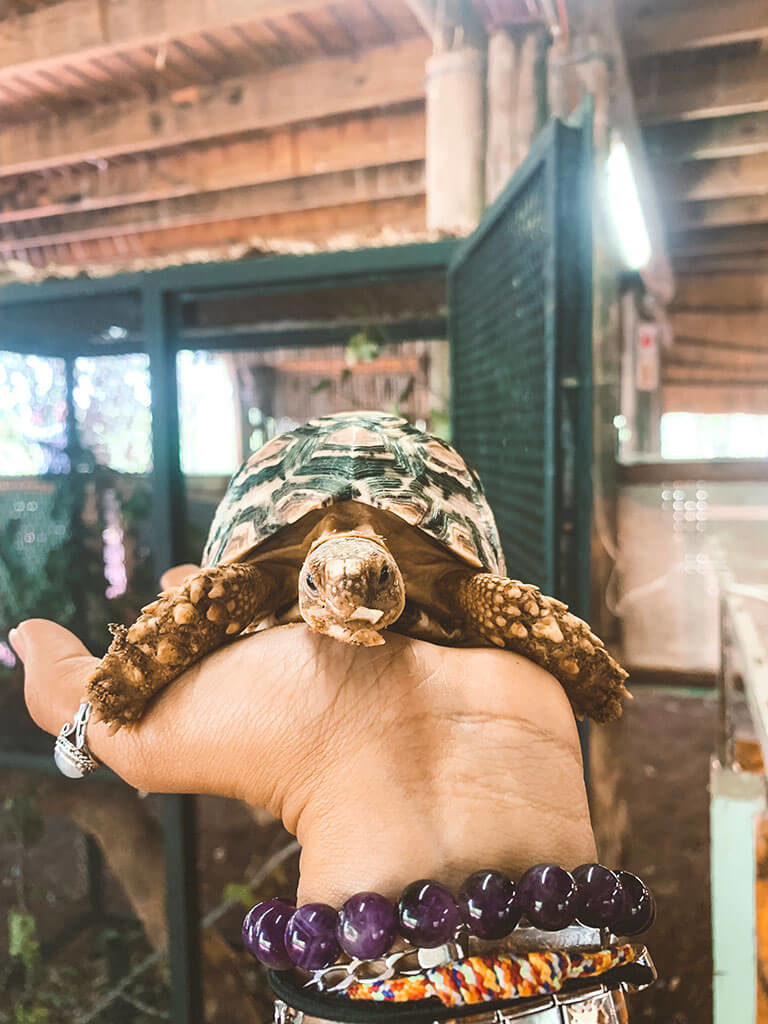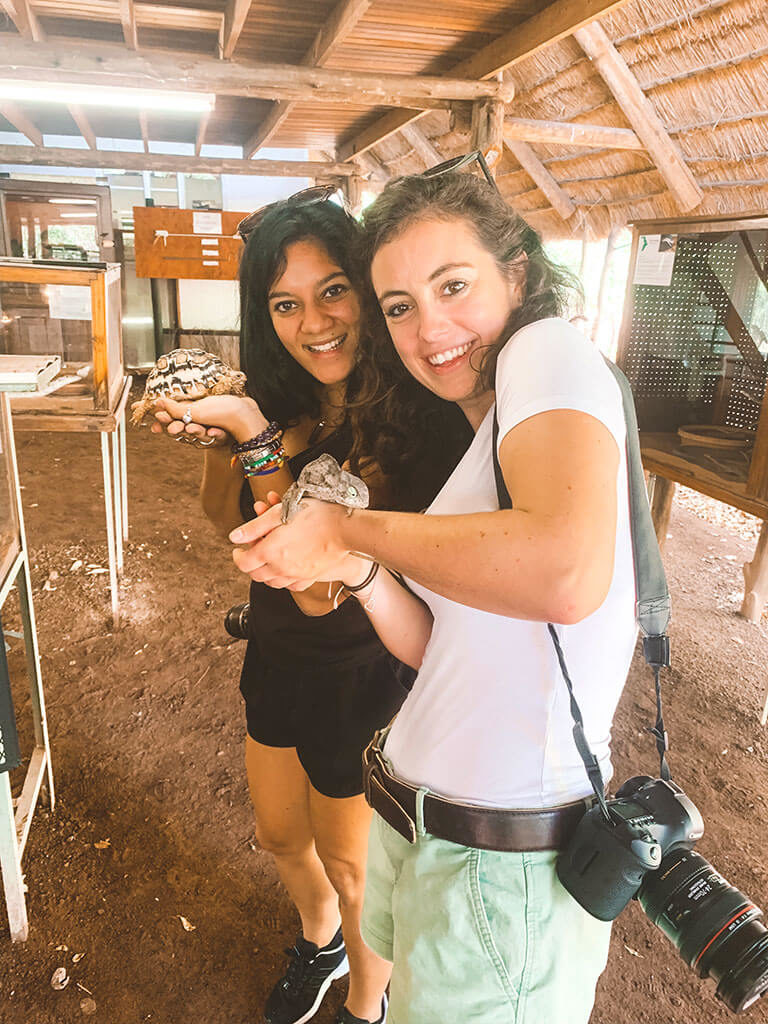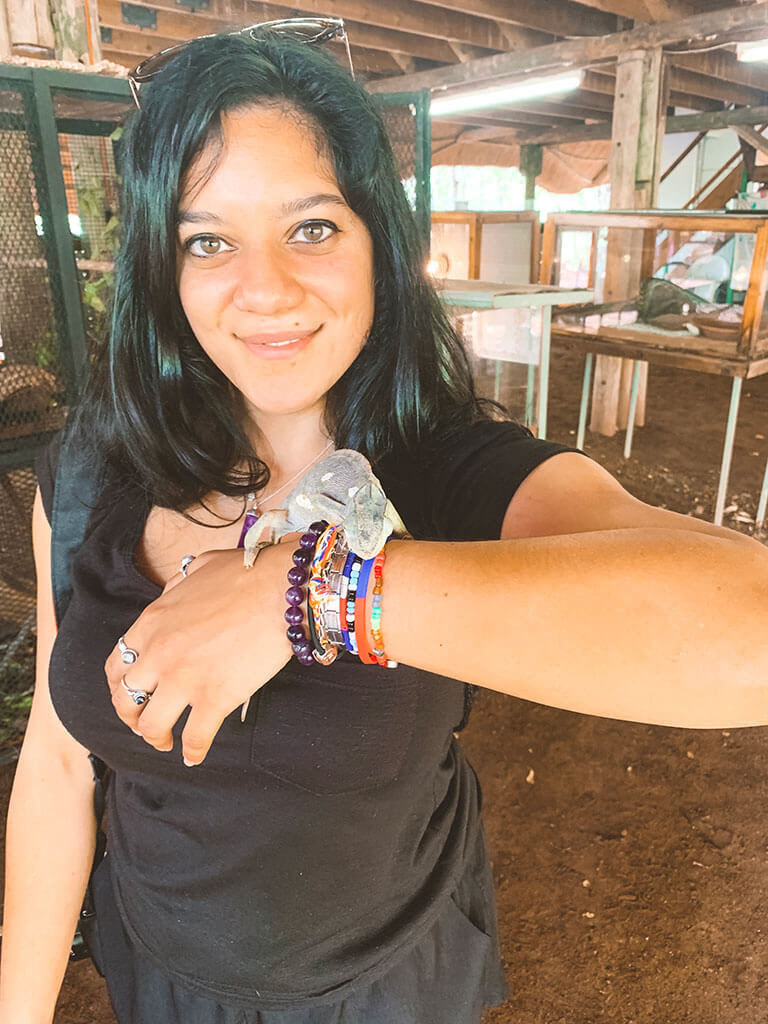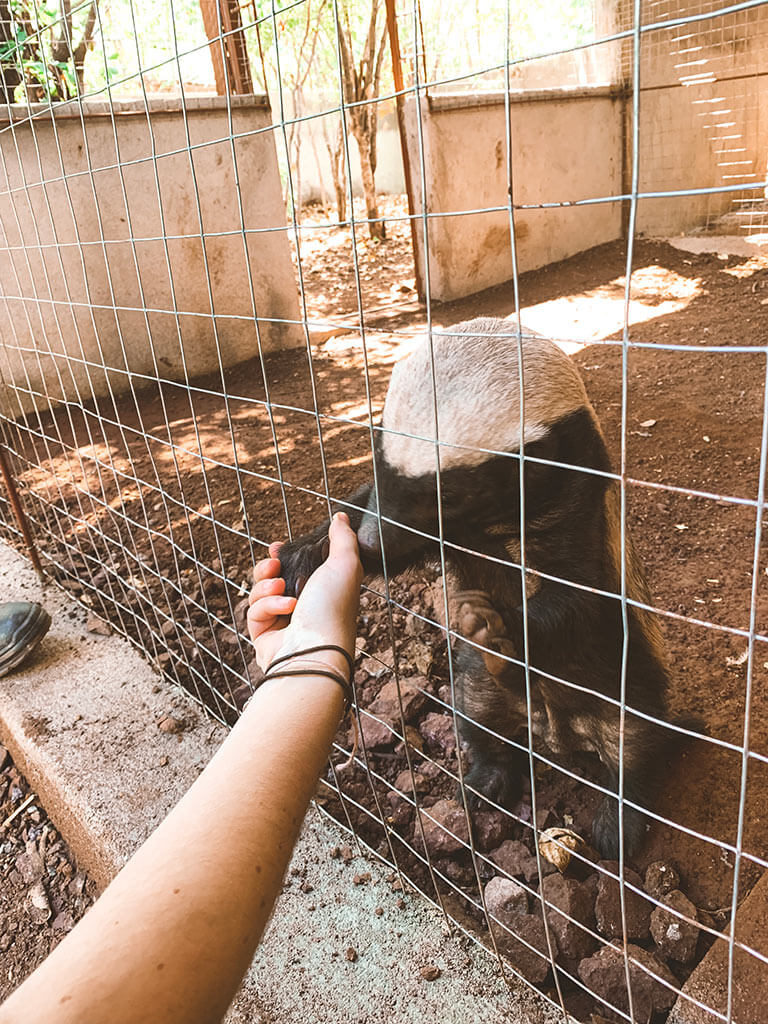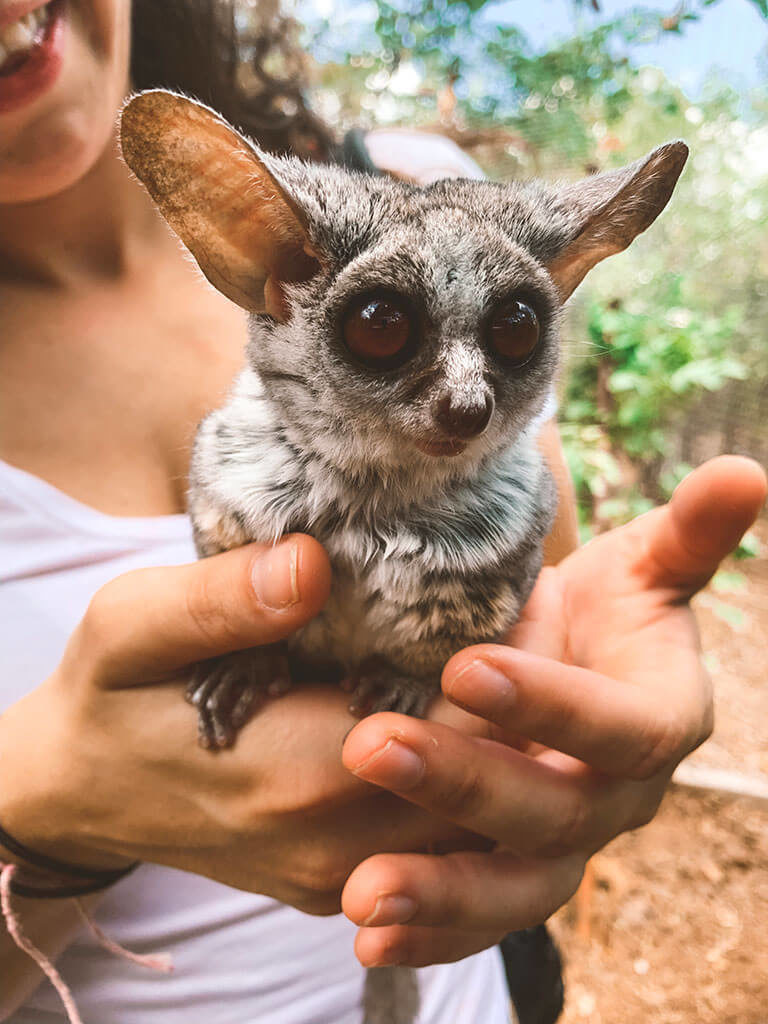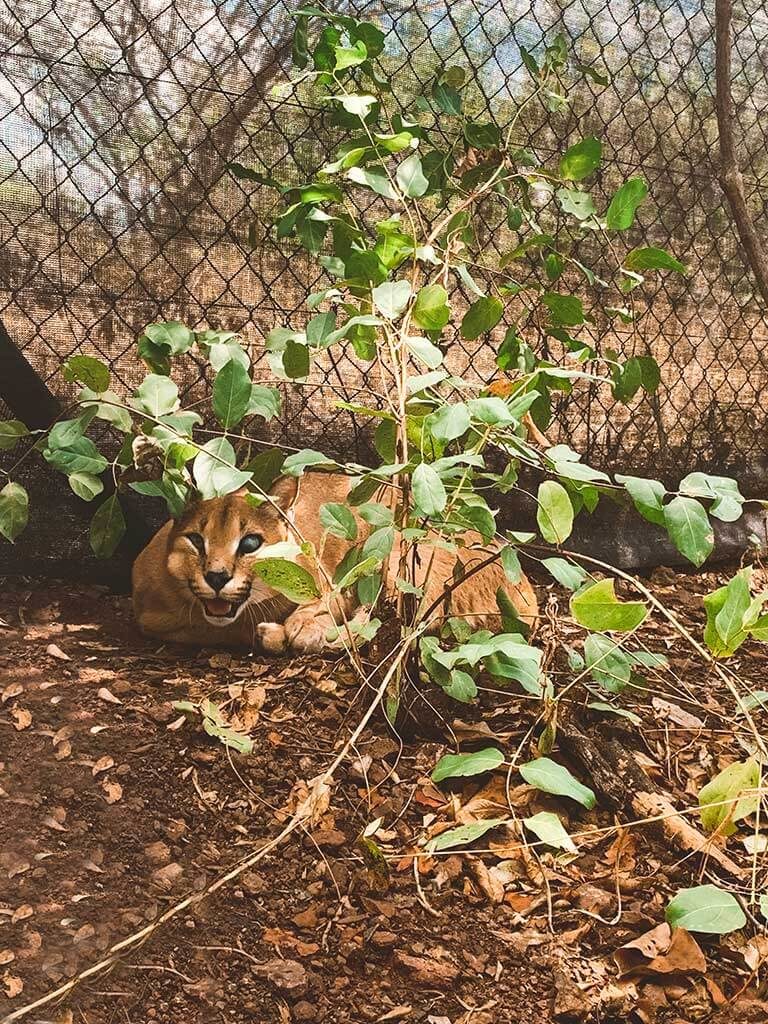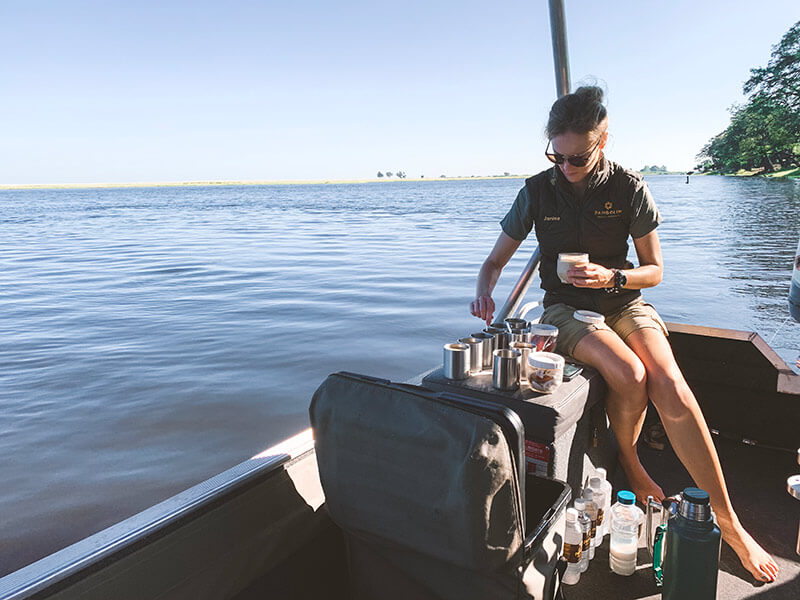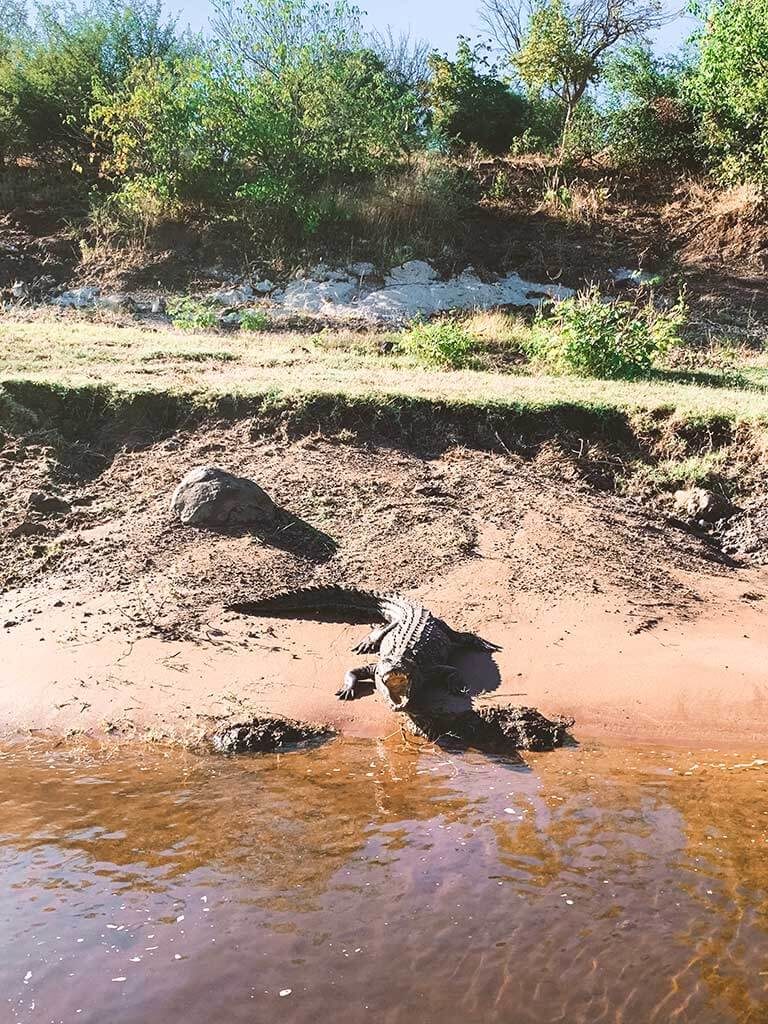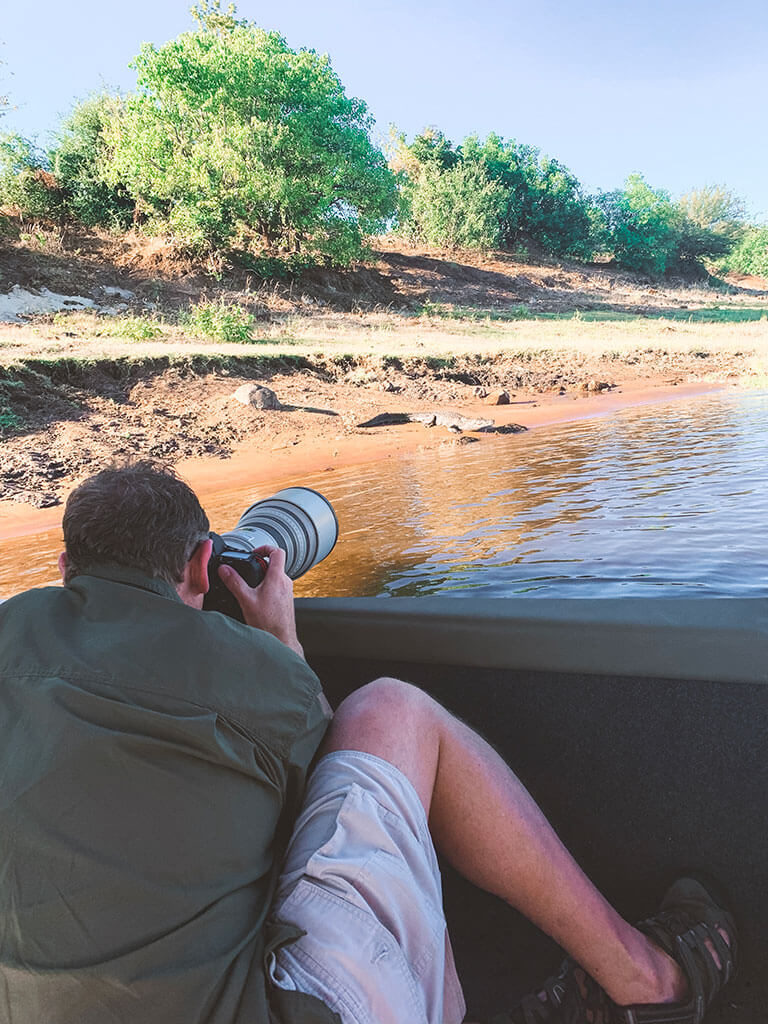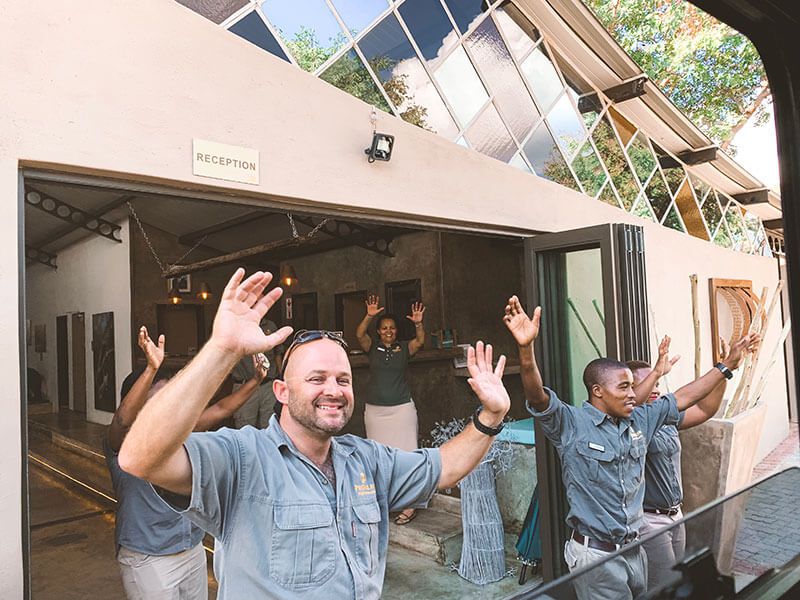Last month we travelled to the beautiful country of Botswana for a fantastic wildlife photo safari. Without a doubt this was one of the best trips we’ve ever done, and we’re already planning our return!
Not only were we taught a new skill, but we also got to practice it right then and there, in one of the world’s most beautiful settings. From waiting for hippos to raise their nostrils above water level, to capturing birds in flight as they darted around the reeds, we witnessed some of Africa’s most majestic wildlife, and were perfectly equipped to capture the moment.
Read more about our amazing time at Pangolin Chobe Hotel with Pangolin Photo Safaris.
If you don’t know what a pangolin is, read our collection of interesting animal facts about the pangolin.
Four-Day Photographic Tour with Pangolin Photo Safaris
Day 1, Arrival
We flew from Johannesburg to Botswana, arriving at the recently renovated Kasane International Airport. Upon arrival, we were greeted by our driver, Moss, who was absolute delight form the word go. A bit off of the itinerary, we begged Moss to take us on a short orientation of the town of Kasane.
Welcome from our driver Moss Lounge of Pangolin Chobe Hotel
Here, we saw more of the town, the stores and few restaurants, as well as plenty of baboons and warthog that roamed the streets. While baboons are best avoided, the warthogs are very placid and are happy to mosey about their business.
After the short introduction to the town of Kasane, we arrived at Pangolin Chobe Hotel. As we arrived, we met more members of the team, including Penyo, Guts, the co-founder and Buhle (or Miss B). After a light refreshment and orientation, we met Janine who would be our guide and photographic teacher for the next few days.
On this particular day, there was unusual rainfall, and due to low visibility of animals, we decided to skip the boat ride and relax at the lodge. A stunning building, the exterior of Pangolin Chobe Hotel has been designed to include a really unique feature: a collection of multi-coloured checkered glass panels, constructed to resemble the shape and appearance of a pangolin.
One of the most beautiful features of the lodge is the pool. Built around a sunken boma and seating area the pool uses a number of water plants to filter the water. This negates the use of chemicals such as chlorine or salt for the system, ensuring that the water is soft. Not only enjoyed by the guests, local elephants, who have been known to visit the pool and both drink the fresh, filtered water, and snack on the plants. Measures have been put in place to discourage the elephants from drinking from the lodge pool, and to use the waterhole nearby instead.
Pangolin Chobe Hotel pool Pool reserved for hotel guests and wandering ellies only
After the sunset, we enjoyed a lovely dinner at the lodge. Dinner services are completely different each night. About two to three mains are served with a collection of sides, vegetables, salads and various breads. Deserts are always a pleasure, and guests can enjoy plenty of delicious South African wines.
Day 2, Chobe River, Lightroom tutorial
With an early start, our second day at Chobe Pangolin Lodge began with a light breakfast and coffee before heading in a minibus to the Chobe River. The lodge is a short five-minute drive from the river where, upon arrival, a quick footpath leads to the Pangolin Photo Safaris dock. Here, we met Dan, an expert bird spotter, perfect shot chaser and unpredictable-hippo avoider.
Each of Pangolin’s boats are fitted with eight seats and a photographic rig. The rig swivels a full revolution, allowing you to capture a shot from any angle in the boat. The arm of the rig is designed with three axes, this allows the camera to be moved and adjusted to capture images in any position. There are also adjustable nuts on each of the arms that can be tightened for when you’d like to stabilize the camera completely, or loosened for when you’d like to adjust your position.
Pangolin Photo Safaris boat Camera set up
We spent the morning on the river learning plenty from Janine, who started us off shooting in AV, Aperture Priority.
As well as static shots, Janine introduced the group to a technique called ‘panning’. Here, the idea is to keep the camera in motion, following on the same axis as a subject as it moves. We spent some time following an egret as it flew around the banks of the river. Another technique we learned during this session – the push and pull technique – taught us how to create a radial blur using the camera alone. At one point, we found the perfect subject; an enormous crocodile lazing on the banks of the river. We set our focus on the eye of the croc and practiced this new and interesting technique.
After roughly three hours on the water, we returned to the lodge for a delicious brunch. Following brunch, we all gathered in one of the rooms for a Lightroom tutorial. For the next three hours, Janine showed the group the ins and outs of the popular image editing program, including how to download and install Lightroom, image organisation with Lightroom and editing techniques.
Candid shot Adobe Lightroom tutorial
With only a few moments to grab a quick refreshment and some warm jackets, it was back down to the river for the days’ second activity. Again, we hopped into the boat and sped off on the Chobe searching for Botswana’s beautiful birds and animals.
Along with the incredible sightings of elephant, a plethora of birds, buffalo and more, we enjoyed our first sunset on the Chobe; one of the most marvellous sights to witness in the world. We returned to the lodge for dinner and enjoyed a wonderful feast.
Day 3, Chobe National Park Safari, CARACAL, Chobe River
Another early start saw us up and ready for another morning photographic safari. After a quick breakfast, we all jumped into a safari vehicle nicknamed The Beast and headed to the Chobe National Park.
An old army vehicle, The Beast has been specially designed and engineered for photographic safaris. Extremely roomy, the vehicle is high and wide enough for safari goers to stand and move around inside with comfort. Large windows on either side of the vehicle have two padded posts stacked on top of each other. These posts allow for two people to rest and stabilise their cameras and capture the same subject matter at the same time.
‘The Beast’ next to a regular vehicle Baboon troop road block
Our journey into the Chobe National Park started with a bang, with us spotting a male lion roaming through the shrub, roaring as he called for his brothers. Another fantastic sighting was a pack of four African jackals.
We spent the morning ambling through the park, searching for wild and refining our photographic skills. At one point, we stopped for a bush breakfast, coffee and freshly baked biscuits, and took a wonderful group photograph!
Bush breakfast Coffee with a herd of impala in the distance
After returning to the lodge and enjoying brunch, a few people decided to visit CARACAL, an animal rescue and rehabilitation centre five minutes from the lodge. At CARACAL, animals, birds and reptiles that have been harmed or injured are rehabilitated to the point where they either can be released into the wild or if they are too severely injured can live in a place of peace where they will have all of their needs met.
We opted for a guided tour of the centre (highly recommended), which began with the reptile enclosure. CARACAL hosts a number of snakes, some of which can be removed from their enclosure and handled, such as the venomless garden snakes and python. Other snakes on display are some of Southern Africa’s most deadly serpents, whose venom is so lethal it can kill a human within minutes. As well as snakes, there are several other reptiles including a few tortoises and a giant chameleon.
The star of CARACAL is, without a doubt, a honey badger named Molly, found abandoned on the side of the road. Molly was brought to CARACAL for safekeeping where she has since been raised by humans. Full of life and energy, Molly is a ball of fun and is always ready to play. She has an affinity for toes, should you decide to visit CARACAL, wear closed shoes. Even so, her nibbles are playful, not painful.
Very clingy Honey badger handshake
Some of the animals require constant care. They have deeply moving stories, such as a steppe eagle who has lost a wing after being fatally wounded by a car, and another bird of prey who became blind from eating fish from a poisoned water source.
There are plenty of animals stationed at CARACAL, including various birds of prey, owls, bushbabies, mongeese, warthog, serval and an actual caracal.
Bush baby Caracal
After a deeply informative afternoon at the centre, we returned to the lodge for a quick bite to eat before heading down to the river. While basking in the sunlight during another beautiful afternoon on the Chobe, we learnt even more from Janine, this time shooting in full Manual mode.
Morning coffee on the Chobe River A reed cormorant airing its wings
One of the most challenging tasks we were set was to try and capture birds in flight. At some point in the afternoon, we spotted a collection of carmine bee-eaters and little bee-eaters that would fly back and forth between their nests and the surface of the water where they’d snatch insects in their beaks. Our task was to capture an image of the birds at the exact moment that they’d touch the water, not an easy feat, but a really fun exercise.
Following another information-packed afternoon, we returned to the lodge, revelling in another awe-inspiring sunset in Africa.
Day 4, Chobe River
Our final day at Pangolin Cobe Lodge saw an 11 AM departure. Thankfully, we had just enough time to enjoy one last morning activity; a final lesson with Janine on the river.
As well as plenty of birds, we were able to see and capture several elephant and buffalo. Most surprisingly was the number of hippos we saw during this session. At one point, a male and female hippopotamus were mating in the shallow water surrounded by a few of their calves. At the exact same time, a few meters away in the opposite direction, two male hippos were in the middle of a fight. Thrashing around so intensely, that when they’d break the surface of the water and would spray in all directions, these two set the stage for the perfect picture.
Another technique we were taught was how to capture a high key image. Here, we were shown how to set our camera settings to overexpose our subject matter intentionally. The result is a stark and highly contrasted image that creates an incredibly captivating and dramatic visual effect. On more than one occasion, we practiced this technique on hippos and crocodiles.
As another morning on the beautiful Chobe River came to a close, we returned to the lodge for a delicious brunch, before departing Botswana for Zambia.
We left Pangolin Chobe Hotel filled to the brim with plenty of incredible memories, new friendships, a world of information about camera setup, photographic techniques and animal facts, and last but not least, gigabytes of amazing photographs.
Our time with Pangolin Photo Safaris was one of the best experiences we’ve had to date. Embarking on a general safari, be it on land in a game vehicle or on water in a boat, is an incredible experience on its own, however, the photographic element offered by Pangolin certain is a few notches above the average safari.
Not only are you supplied with the best camera equipment, specifically selected for wildlife photography, but you’re also given a world-class education. As well as learning how to set up a camera, how to interpret and anticipate light, and how to position a camera for subject matter, you’re also taught a number of photographic techniques (such as push and pull, high key, panning etc.) that are a step out of the realm of beginner photography.
Pangolin Photo Safaris employs top-quality photographers as guides. While it’s one thing to be proficient in a skill, it’s a whole other ball game to be able to explain and teach this skill to a novice. Our guide Janine was both an expert photographer and an excellent teacher. One thing that stood out the most about her instruction, is her unwavering patience for answering questions, even when we’d ask the same questions over and over again.
While not every traveller enjoys photography, those who do would really have a fantastic experience with Pangolin. As well as photographic experiences on the Chobe River, based from their lodge in Kasane, Pangolin Photo Safaris also offers a range of alternative photographic safaris including:
- Botswana (Chobe River and Okavango Delta)
- Zimbabwe, Botswana, South Africa
- Masai Mara
- Namibia with Rovos Rail
- and many more!
If you’re interested in venturing to Africa for a wildlife photographic safari, and would like to learn this skill in one of Africa’s most beautiful destinations with some of the best photographers and teachers in the business, contact African Travel Canvas for a bespoke itinerary.
We want to thank the entire team at Pangolin Photo Safaris who made our time in Botswana so memorable and enjoyable. Beyond the photographic instruction, fascinating discussions about wildlife conservation and our time both inside the park and on the river, we loved the kind hospitality and ‘family’ dinners, and left with the heart-warming feeling that we’d return in the future to spend time with our friends. Our stay at Pangolin Chobe Hotel was, as chef Robson says, ‘so lovely.’
